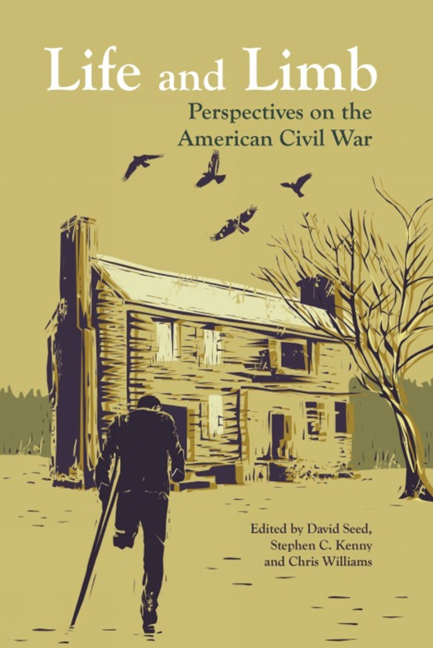Book contents
- Frontmatter
- Contents
- List of Illustrations
- Acknowledgements
- Introduction: Civil War Voices and Views
- MEDICAL AND SURGICAL MEMOIRS
- Early Experiences in the Field: ‘Surgical Reminiscences of the Civil War’
- Case 275: The Medical and Surgical History of the War of the Rebellion
- ACCOUNTS OF NURSING
- MEDICAL FACILITIES AND PATHOLOGY
- PHOTOGRAPHY
- AMPUTATIONS AND PROSTHETIC LIMBS
- IN THE FIELD OF BATTLE
- POST-WAR NARRATIVES
- Contributors
- Select Bibliography
- Index
- Plates
Case 275: The Medical and Surgical History of the War of the Rebellion
from MEDICAL AND SURGICAL MEMOIRS
- Frontmatter
- Contents
- List of Illustrations
- Acknowledgements
- Introduction: Civil War Voices and Views
- MEDICAL AND SURGICAL MEMOIRS
- Early Experiences in the Field: ‘Surgical Reminiscences of the Civil War’
- Case 275: The Medical and Surgical History of the War of the Rebellion
- ACCOUNTS OF NURSING
- MEDICAL FACILITIES AND PATHOLOGY
- PHOTOGRAPHY
- AMPUTATIONS AND PROSTHETIC LIMBS
- IN THE FIELD OF BATTLE
- POST-WAR NARRATIVES
- Contributors
- Select Bibliography
- Index
- Plates
Summary
The Medical and Surgical History of the War of the Rebellion, 1861–1865 (MSHWR), prepared under the direction of Joseph K. Barnes, Surgeon-General of the Army, gives statistics assembled from medical reports. Published 1870–88, the volumes include extracts from narratives by individual members of the medical staff. The introduction to Volume 1 states that ‘aside from all considerations of a scientific or historical nature, motives of humanity would seem to dictate that the statistics should be presented in the form most likely to render them serviceable as a contribution to our knowledge of the influence of race-peculiarities on disease.’ The full text of the history can be found at https://archive.org/details/medicalsurgical22barnrich.
The following text is from MSHWR Part II, Vol. II, pp. 90–91.
Lieutenant J.E. Mallet, Adjutant 81st New York, aged 21 years, was wounded at the battle of Cold Harbor, June 3, 1864, by a musket ball, which entered three inches to the left of the umbilicus and made its exit a little to the right of the spinal column […] This officer, who still survives and holds an important civil office under the Government, has kindly prepared an account of his case, which is peculiarly valuable because of the rarity with which reliable information of the immediate symptoms produced by severe wounds can be obtained. The authenticity of the facts is unquestionable, and, independently of the officer's own statement, is affirmed by the testimony of the medical attendants. ‘I was wounded,’ says this brave officer, ‘at the battle of Cold Harbor, while serving as adjutant of the 81st New York Infantry, or 2nd Oswego Regiment, then with the Army of the Potomac, and attached to the first (Marston's) brigade, first (Brooks's) division, eighteenth (Smith's) Army Corps. It was at about five o'clock in the morning, and in the assault on the enemy's entrenched lines, I was struck. I fell at the distance of about fifteen paces from the works which our men were charging with uncapped pieces. The missile entered my left side. I distinctly remember the sensations experienced upon being hit. I imagined that a cannon ball had struck me on the left hip-bone, that it took a downward course, tearing the intestines in its course, and lodged against the marrow of the right thigh-bone.
- Type
- Chapter
- Information
- Life and LimbPerspectives on the American Civil War, pp. 13 - 16Publisher: Liverpool University PressPrint publication year: 2015

